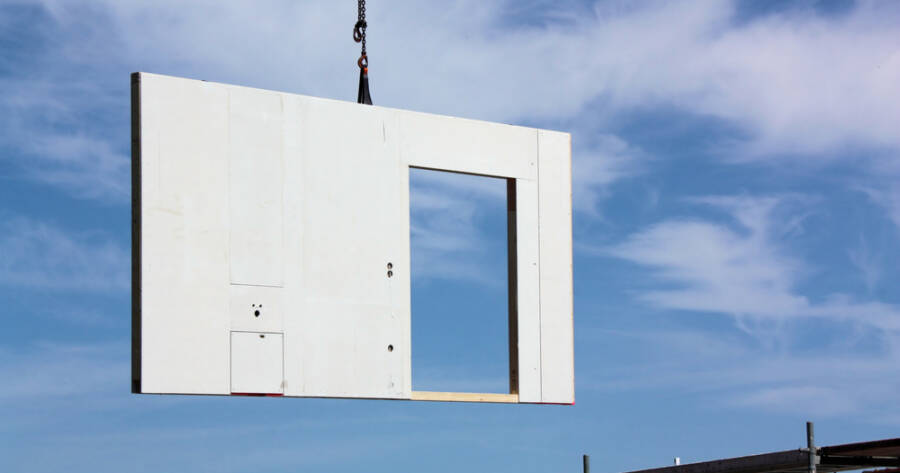As awareness of environmental impacts grows, many people are seeking sustainable living solutions. Eco-friendly prefab homes are gaining traction as a stylish, durable, and affordable alternative to traditional housing. These homes are designed to minimize environmental footprints while offering modern aesthetics and solid construction. Prefabricated homes present an opportunity to embrace sustainable living without sacrificing comfort. For those interested in reducing their carbon footprint, these homes might provide an enticing option that balances eco-consciousness with cost-effectiveness.
What Are Eco-Friendly Prefab Homes?
Eco-friendly prefab homes, built using prefabrication techniques, are constructed in sections—often called modules—in a factory. These modules are then transported and assembled on site, significantly reducing construction time. The homes are designed with sustainability in mind, utilizing materials and methods that lower their ecological impact. These can include renewable resources, energy-efficient fixtures, and systems that minimize waste. Prefab construction allows for precise control over building processes, enhancing quality and reducing material loss.
The focus on sustainability means incorporating various eco-friendly attributes. For instance, materials like recycled steel or sustainably sourced wood may be used in construction. These homes might also include features such as solar panels, high-efficiency insulation, and water-conserving plumbing systems. By combining advanced building techniques with sustainable practices, prefab homes can deliver long-term environmental benefits, fostering a future where living spaces harmonize with nature.
Advantages of Prefab Homes
Prefab homes offer several advantages that appeal to those looking for modern, sustainable living solutions. Firstly, they are often more affordable than traditional homes, largely due to the efficiency of the factory assembly process. This efficiency reduces labor costs and waste, translating into savings for the homeowner. Moreover, the controlled environment of a factory ensures high building standards, potentially enhancing the durability and longevity of the home.
In addition to cost and quality, the speed of construction is another significant benefit. Because much of the building occurs simultaneously with site preparation, prefab homes can be completed more rapidly than conventional builds. This is particularly advantageous in areas where weather can impede construction progress. The time savings can accelerate move-in dates, reducing interim housing needs and providing quicker access to a new, eco-friendly home.
Designing for Energy Efficiency
Energy efficiency is a cornerstone of many eco-friendly prefab homes, aiming to minimize energy consumption and reduce utility costs. Designs often incorporate advanced insulation, energy-efficient windows, and passive solar heating strategies. These features help maintain temperature comfort with minimal energy use. Some prefab models integrate renewable energy sources like solar panels or wind turbines, aligning with sustainable goals by generating clean energy on-site.
Heating, ventilation, and air conditioning (HVAC) systems in these homes tend to use high-efficiency models that optimize energy use. Smart home technology can further enhance energy management, offering intelligent control over heating, cooling, and lighting. By addressing energy needs comprehensively, prefab homes contribute to reducing overall environmental impact while offering financial and lifestyle benefits to residents.
Customization and Aesthetic Appeal
Contrary to misconceptions, prefab homes can offer a high degree of customization and aesthetic variety. Homeowners can choose from numerous design elements, allowing for personalized layouts and finishes that reflect their style. Modern designs provide various architectural options, ranging from minimalist to more traditional styles. This flexibility enables prospective homeowners to tailor their prefab home to their preferences while incorporating eco-friendly features seamlessly.
Moreover, the adaptability of prefab homes means they can suit different environments, whether urban plots or rural settings. The innovative designs combine functionality with aesthetics, ensuring that homes not only meet efficiency standards but also offer visually appealing and comfortable living conditions. This bespoke approach means that living sustainably can be both practical and beautifully executed.
Environmental Impact and Sustainability
Eco-friendly prefab homes are crafted to minimize environmental impact throughout their lifecycle. The precision of prefab construction reduces waste compared to traditional building methods. Furthermore, the controlled factory environment often results in fewer emissions and lower energy use during assembly. The reliance on sustainable materials and practices also supports responsible resource management, reinforcing the environmental credentials of these homes.
Incorporating energy-efficient systems and renewable energy sources contributes to ongoing environmental benefits. Reduced energy consumption and minimal waste production align with broader sustainability goals. Designing homes that optimize natural light and airflow reduces dependence on artificial lighting and mechanical ventilation. Over time, these savings accumulate, offering homeowners both ecological benefits and economic ones.
Learn More Today
Eco-friendly prefab homes offer an appealing pathway for those seeking stylish, durable, and affordable living solutions that harmonize with environmental values. By embracing modern construction methods and sustainable practices, these homes provide a balanced approach to contemporary housing needs.
Exploring the potential of prefabrication can guide individuals and families toward choices that support sustainability while catering to personal preferences and requirements. As demand for eco-conscious living grows, prefab homes stand at the forefront of responsible and innovative residential design, paving the way for a greener future.

